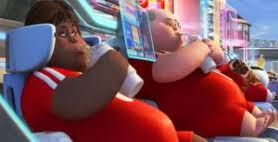 | |
| Most people are at a 3, true experts range from 50 to 75 |
This is because of a few things: firstly, I wrote a paper on the subject for my History of Math class in the spring. Secondly, I decided to apply for a research opportunity at the university focusing of origami. I have a few questions to get started if they like my proposal:
First:
The area of a square piece of paper is fixed and cannot change (since cutting and pasting/taping is illegal) but as you fold, the part you see will change. Of course, you can never make more area than what you started with. The perimeter also changes but does it have an upper limit?
So along the way, someone figured out that there is a way to make a shape have an infinite perimeter but never exceed a certain area (remember perimeter is a measurement of the edges of a shape, area is a measurement of the inside of a shape)
This was a really quick sketch I made to illustrate my point: the circle is this fixed thing. The area and perimeter do not change. You can measure them, write home about them but that would be boring to read (and to write) but the triangles are VERY interesting. This was just three levels I drew but I think it is enough to see something interesting: you draw that first big triangle and make it touch the circle at all tree corners. Then, for every side of a triangle, draw another so that one side (of the new triangles) touch the first big one. Now there are 12 "sides" where you can draw even more triangles on those you have already got! Repeat until you die* and you will have accomplished something very neat: That weird jagged shape you made will always fit in that circle so the area MUST be smaller but the perimeter is MUCH BIGGER than the circle's! There is actually no upper limit to the perimeter so you could make it infinite if you lived that long.
*I really hope you have better plans than this with your life though. Sheesh! What is wrong with you anyway? You have so much more potential!
Is origami the same as this drawing? Can you make a flat shape by folding, which has a larger perimeter than that square you started with? (And fyi: always a square in traditional origami) I personally don't know the answer yet (hence a good area to start my research right?)
Second:
Is there a reasonable way to construct the solution to the general quintic equation? This one is probably beyond me since it has been beyond EVERY SINGLE MATHEMATICIAN EVER (and everyone else)
What is a quintic equation you ask? Well lets just say it is a squiggly line represented by an equation that looks something like this:
You would read this out loud as "y equals x to the fifth" (or rather, I would. and have. and still do.) This is probably the simplest quintic equation and doesn't scare too many people but they can get a lot harrier. And gross. You could also add an "x to the fourth" and "x cubed" etc. You could also multiply any of those individual terms by a regular ol' number (or imaginary number. imaginary numbers are actually just as real as regular numbers . . . which isn't saying much since numbers were just imagined in the first place. So basically, numbers were never real to begin with)
Note: actually my explanation is wrong since the squiggly line is the representation. The y=(x-stuff) thingy is the actual thing. (well sort of.) But hey, this is my blog and I'll misexplain if I want to. (♫ you would misexplain too if it happend to you ♫)
There has been some work in mathematical origami that has proven that if you make so many simultaneous folds, there exists a way to solve the general quintic equation . . . but nobody has quite figured what that might be. I'd like to work on that too.
And just for fun, I want to tell you about some neat things that the ancient Greeks would be jealous of: First, you can easily use origami to divide ANY angle into thirds. Second, you can easily make two cubes where one is exactly twice the volume of the other. (well sort of, you can find the lengths of the sides anyway) Man. Those ancient Greek mathematicians and their crazy antics! Paper was invented 2000 years too late in my opinion. Why were these guys drawing stuff with their straightedge and compass when they should have been inventing paper? Certain wasps had got it figured out by then I am sure. But Pythagoras and Euclid were probably too busy living it up to get anything else done.
Perhaps I will save those origami tricks for another day. They really are quite neat and fun to do! If you want, you can find them in this book.
HAPPY NEW YEAR TO YOU ALL!!!
























